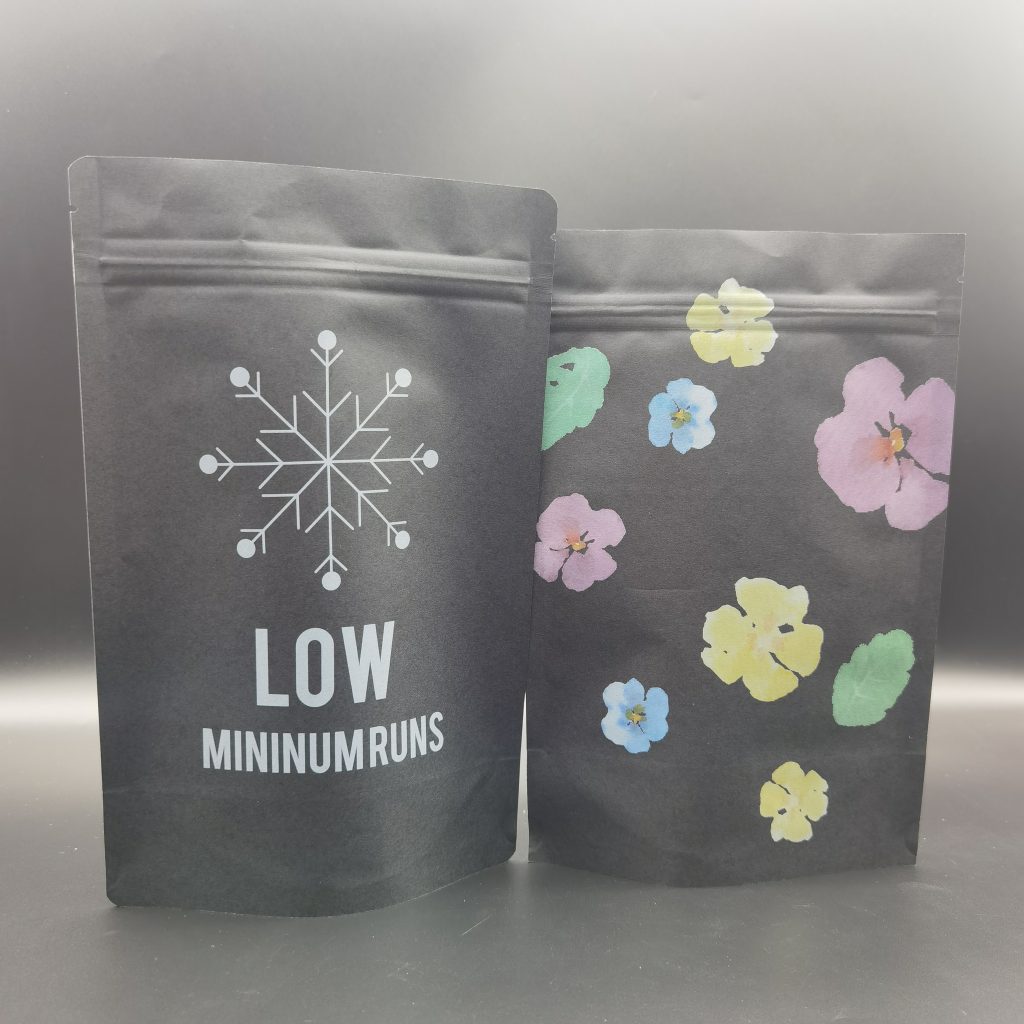What Is a Green Packaging Bag?
As the world becomes more environmentally conscious, the demand for sustainable products continues to grow. In particular, packaging—often made from plastic or other non-biodegradable materials—has come under scrutiny due to its environmental impact. In response, “green packaging” has emerged as an essential concept in packaging design, encompassing the use of environmentally friendly materials and processes. When we refer to a “green packaging bag,” we’re talking about a bag made from sustainable, recyclable, or biodegradable materials designed to reduce environmental impact. One of the key drivers of this transformation in packaging is digital printing technology, which allows for customization and high-quality designs while supporting eco-friendly goals.

The Principles of Green Packaging Bags
A green packaging bag aims to address the environmental concerns associated with traditional packaging methods. These bags are designed with a focus on sustainability, durability, and recyclability. The primary characteristics of green packaging bags include:
Biodegradable or Recyclable Materials: Green packaging bags are often made from materials that are either biodegradable, recyclable, or compostable. Biodegradable bags break down naturally over time, leaving no harmful residues, while recyclable bags can be reused and repurposed after their initial use, reducing waste.
Sustainable Sourcing: Green packaging bags are typically made from renewable resources, such as plant-based plastics, natural fibers (like cotton or jute), or paper. These materials are produced with minimal environmental harm and can often be sourced from sustainable agriculture or recycled content.
Minimal Environmental Impact: Beyond the materials themselves, the entire lifecycle of the packaging is considered, including manufacturing, transportation, and disposal. Green packaging bags are designed to use fewer resources, such as energy and water, during production, and to produce less waste and pollution during their disposal.
Reduced Carbon Footprint: The goal of green packaging is to reduce the carbon footprint associated with packaging. By using sustainable materials and manufacturing techniques, the overall environmental impact of the packaging is minimized.
Non-Toxic Inks and Coatings: Traditional packaging often uses inks and coatings that contain harmful chemicals, such as volatile organic compounds (VOCs). Green packaging bags use non-toxic, water-based, or vegetable-based inks, which are safer for the environment and human health.

How Digital Printing Supports Green Packaging Bags
Digital printing technology has revolutionized the packaging industry by offering sustainable alternatives to traditional printing methods. While traditional printing often requires the use of large amounts of ink and produces significant waste, digital printing allows for more precise, efficient, and eco-friendly production. Here’s how digital printing is helping to advance green packaging:
Reduced Waste and Overproduction: One of the main advantages of digital printing is that it eliminates the need for printing plates, which can be wasteful and time-consuming to produce. Digital printing allows brands to print on demand, meaning they only print what is needed, reducing excess inventory and waste. This is particularly important for businesses that produce small runs or limited edition packaging, as it allows for a more efficient, waste-free process.
Eco-Friendly Inks: Digital printing typically uses water-based, vegetable-based, or soy-based inks, which are much safer for the environment compared to traditional petroleum-based inks. These eco-friendly inks contain fewer volatile organic compounds (VOCs), which contribute to air pollution. Using these inks in green packaging bags helps companies reduce their environmental impact while still achieving vibrant and high-quality designs.
Customization and Flexibility: Digital printing offers unparalleled flexibility when it comes to customization. Companies can easily create unique designs or change graphics without the need for large production runs or additional resources. This means that brands can produce packaging tailored to specific product lines or customer needs, without wasting materials on unwanted or unsold designs.
Efficient Use of Materials: Since digital printing involves precise application of ink, there is minimal waste compared to traditional printing methods, which often result in excess ink usage and overprints. This efficiency means that fewer resources are used overall, making the entire process more sustainable.
Enhanced Recycling and Compostability: Digital printing allows for high-quality prints on a variety of sustainable materials, including paper, biodegradable plastics, and plant-based films. These materials are often more easily recyclable or compostable, making it easier for consumers to dispose of the packaging in an eco-friendly manner.

The Benefits of Green Packaging Bags with Digital Printing
The integration of digital printing with green packaging bags brings a wide range of benefits to businesses, consumers, and the environment:
- Reduced Environmental Impact: By using sustainable materials and digital printing processes, green packaging bags help reduce the overall environmental footprint of packaging.
- Cost Savings: While digital printing may have a higher upfront cost compared to traditional methods, its efficiency and ability to produce smaller batches reduce costs over time. Companies save money on production, materials, and inventory management.
- Brand Appeal: As consumers become more environmentally conscious, they are increasingly drawn to products that use sustainable packaging. Green packaging bags with custom digital prints can help brands stand out in a crowded marketplace and strengthen their environmental credentials.
- Compliance with Regulations: As governments around the world introduce stricter regulations on packaging waste and sustainability, green packaging bags made with digital printing help companies stay compliant with environmental laws.

Conclusion
Green packaging bags represent a significant step forward in creating more sustainable and eco-friendly solutions for product packaging. By focusing on biodegradable or recyclable materials and minimizing environmental impact, green packaging addresses growing concerns about waste and pollution. Digital printing technology plays a crucial role in this transformation, offering a more efficient, flexible, and environmentally friendly way to print on these sustainable materials. By adopting digital printing, companies can not only reduce their carbon footprint but also deliver visually appealing and customized packaging that meets the demands of today’s eco-conscious consumers.
You can visit our website to know more about our flexible packaging pouch:
